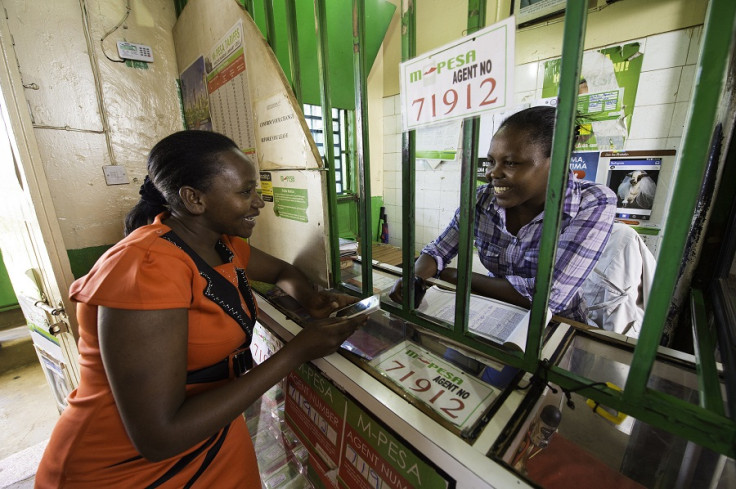Ebay philanthropist funds 'cryptocomplex' cash for central banks

Central banks around the world say they want to drive financial inclusion, especially since telecoms operators have provided them with an object lesson in how this can be done with digital money.
With this in mind, a little known company called eCurrency Mint (eCM) has emerged from the bushes with an announcement that it has received funding from philanthropic investment vehicle Omidyar Network, for a technology that will allow central banks to issue digital legal tender.
Omidyar Network was established in 2004 by eBay founder Pierre Omidyar and the undisclosed lead investment is part of the fund's financial inclusion mandate. eCurrency Mint says it has been honing its breakthrough, dubbed "cryptocomplex" cash, with 30 central banks; two of them are about to make their own announcements about a deployment. This is going to happen early in 2016, eCM CEO Jonathan Dharmapalan assured IBTimes UK.
M-Pesa
The success of services such as Safaricom's M-Pesa has vitiated a big bet on the digitisation of retail financial services front end, which has support from the World Bank, the G20 and UN. And while the Central Bank of Kenya courageously championed mobile money, central banks in other regions have not been so magnanimous when it comes to telcos controlling finance.
India, for example, was uncomfortable with it and went through the entire process of creating a specialised banking licence to allow it. There have also been breaches of mobile money, most notably in Uganda.
Tilman Ehrbeck, a partner at Omidyar Network, told IBTimes UK: "Central bankers around the world took notice and they said on the one hand we like financial inclusion via mobile money, but on the other hand we are concerned about essentially letting non-banks become electronic money issuers.
"We are concerned about the operational risks associated with that, and we are concerned about the systemic risks should something happen. Plus when a mobile telephone network becomes the payment backbone of the country, there are concerns about issues like interoperability."
We are concerned about the operational risks associated with that, and we are concerned about the systemic risks should something happen
Ehrbeck said eCM allows a central bank to issue digital national currency - so a digital pound, digital dollar or digital Kenyan shilling - similar to how a central bank issues notes and coins today.
He said: "It's a digital representation of the national currency and it becomes part of the base money supply. It's done from a monetary policy and regulatory legal perspective, just like any traditional currency issuance. There is literally a secure truck that brings the plate with the digital currency unit to the commercial banks or others in the country."
Ehrbeck said eCM is analogous to those companies today, which help central banks print paper money and make sure that it cannot be easily copied. He said: "That's why you have never heard about this company; you probably have never heard about the companies that print and provide the ink and paper and all the security feature elements that go into today's currency notes either. It's a very small industry that serves very few clients, which is the central banks of this world."
The company in question eCM said its eCurrency consists of a "cryptocomplex". This is a "self-contained security instrument made up of many layers of security technology uniquely bound together to ensure eCurrency cannot be counterfeited or compromised. After deployment, eCurrency's security features can be updated real-time, in order to stay ahead of counterfeiting threats," read a press statement.
'Cryptocomplex'
IBTimes UK asked eCM CEO Jonathan Dharmapalan how it works. He said: "We built on behalf of central banks the machinery that will issue a set of complex codes so that those cannot be issued any other way.
"The central banks have to essentially go through a very particular process, and the process is conducted completely offline. Through that certain codes are issued; not just one code, multiple codes, and they are layered.
"We call it a 'cryptocomplex' or a complex cryptogram and they are layered in such a way that a particular combination cannot be recreated, either online or offline ever again. Then we allow the central banks to give that particular unit, or those units, a certain known value – say a billion rupees. So there is a quantitative value and the secure codes apply to that quantitative value.
"It's quantitatively possible to constantly add up every unit of subset that's been sub-divided and held in multiple wallets. If you add up the sub-units it should never be greater or less than the billion that was originally issued."
Dharmapalan said the digitally watermarked central bank eCurrency actually morphs during every transaction, so it cannot be double spent. If someone attempted to do so it would not be processed. He said: "It happens in real time; it has to happen in real time. And it can happen in real time on any or all existing payments systems."
Dharmapalan said the digital currency can be injected into the financial system like physical cash through banks, and also through ISPs, and mobile money operators and so on.
Apparently, the special sauce that makes the eCurrency work has been in production for about four-and-a-half years. He added: "It's going to be happening very soon. Central banks will make their decision as to how they are going to talk about it."
© Copyright IBTimes 2025. All rights reserved.






















